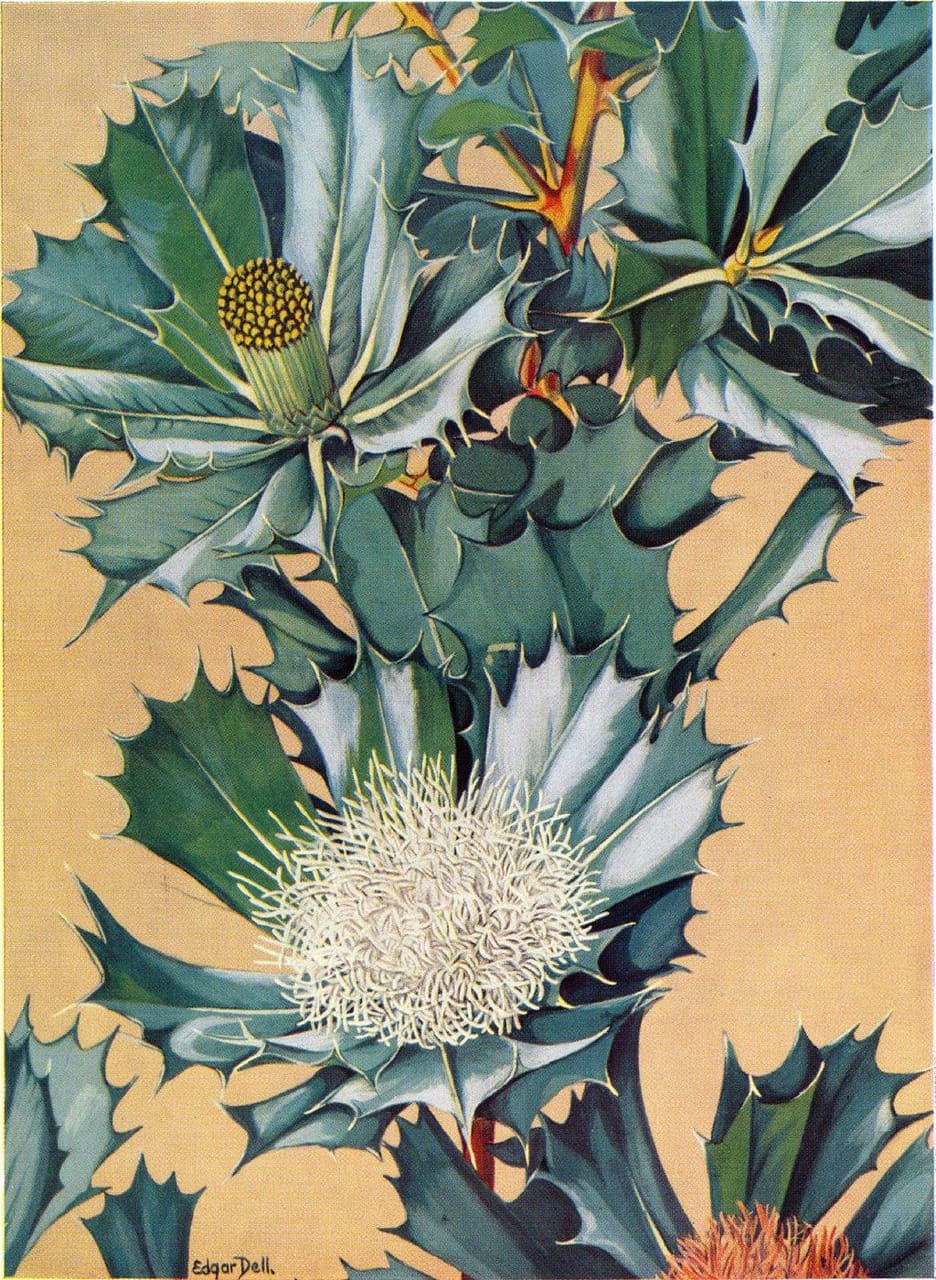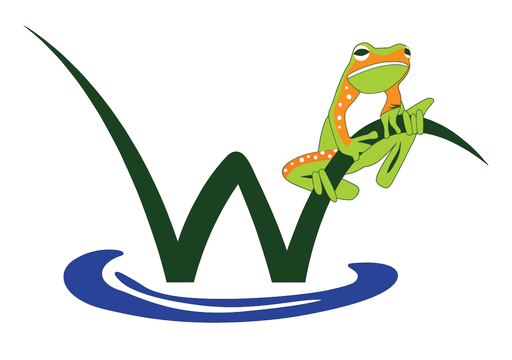Call me
Parrot Bush
Parrot Bush (Banksia sessilis) is a prickly upright shrub or small tree that typically grows from five to eight metres in height. It occurs naturally in the southwest of Western Australia from Kalbarri in the north, along the coast to Bremer Bay in the south, and inland to Wongan Hills and Kulin. It grows in a range of soils from coastal limestone and granite outcrops to inland sands (white, grey or yellow) and rust red laterite.
Family: Proteaceae
Noongar Name: Pudjak, Budjan
Scientific Name: Banksia sessilis (syn. Dryandra sessilis)
Common Name: Parrot Bush
Illustration: A painting of Banksia sessilis (formerly Dryandra sessilis) by renowned floral artist Edgar Dell (1901-2008) first published in 1933 or 1934.
Dell was a prolific Western Australian painter who became famous for his watercolour paintings of the state’s wildflowers. Read more about this incredible artist below.

As the name suggests, Parrot Bush is often an understorey plant in open forest, woodland or shrubland. It has prickly-toothed holly-like leaves and dome-shaped cream to golden yellow flowerheads that are situated at the end of a stem. The flowers appear in abundance from April to November (Djeran to Kambarang). The leaves are blue-green or dark green in colour.

The shape of leaves differs by variety: they may be wedge-shaped with teeth only near the apex; or wedge-shaped with teeth along the entire margin; or broad at the base, almost oblong-shaped. Four varieties of the species have been identified. Banksia sessilis var. cygnorum occurs in coastal regions from Geraldton to Mandurah and is common in Kings Park bushland and Bold Park.
The life cycle of the Parrot Bush is adapted to regular bushfires. Burnt by fire and regenerating by seed afterwards, each shrub may produce many flowerheads and massive amounts of seed. It can recolonise disturbed areas quickly and grow in thickets.

Parrot Bush is a great plant for attracting birds and bees. It provides food and shelter to birds and fauna. It is a great cover and nesting habitat for honeyeaters and quendas dig their burrows in the shelter of the bush. The seeds are eaten by parrots and black cockatoos, including the endangered Carnaby’s Black Cockatoo. The species diversity is severely reduced in areas where little or no parrot bush occurs.
The plant contributes majorly to WA’s honey production. Its flowers were traditionally chewed by the Nyungar people for their sweet nectar and taste, making them a great substitute for honey. The wood from the plant was used to make message sticks that allowed different tribes to communicate.
Edgar Dell
28 November 1901 – 18 April 2008.
Edgar Dell was a Western Australian painter best known for his watercolour paintings of that state's wildflowers.
Born in England in 1901, he emigrated to Western Australia in 1924, where he bought and cleared a bush block in Paulls Valley in the Shire of Kalamunda, establishing an orchard there. The block came to be known as The Dell; this name has subsequently also been extended to a nearby recreation site. During the Great Depression, he made a living cutting timber in the bush, and also painted wildflowers for West Australian Newspapers Ltd., which published one painting a week in a colour supplement to The Western Mail.[1] These were accompanied by a botanical description by Charles Gardner, then Government Botanist, and were so popular that they were compiled into book form and published under the title Western Australian Wildflowers in 1935. A revised and enlarged edition was published in 1958, and again in the 1970s under the title Wildflowers of Western Australia. This ran to numerous editions, albeit with ever-diminishing numbers of Dell's plates.
Little is known of Dell's later life, but as late as 1973 he was still living on the Paulls Valley block that he cleared in the 1930s. He died in 2008, at the age of 106.
"Much painstaking work... has gone into this book. Edgar Dell devoted many hours painting these illustrations with meticulous correctness. This book is a measure of (his) craftsmanship."
– Jack Edmonds, Editor,
foreword to "Wildflowers of Western Australia" 13th Ed. 1978


Very interesting. Thank you!